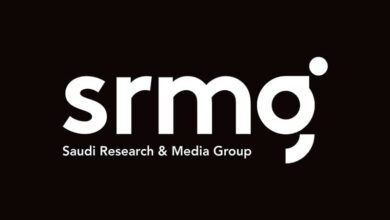Masar’s Latest Foray Into World Of Digital Printing
Masar printing press is one of the biggest printing operations in UAE and the Middle East. Since its inception in 2006 The IMPZ based company has opted for the state-of-the- art technology without any compromise. The company is one of the biggest newspaper printers in the region. As a large printing operation company’s major focus naturally has been on long run and bulk orders. However Masar’s recent foray into digital printing begs the question if the company is changing direction. To shed light on the subject we sat down with Samer Abdel Qader, Pre-Press & Digital Director at Masar Printing and Publishing. “Masar is one of the few printers in the region committed to following international quality and print production standards. Personally since I joined Masar in 2007 I made it my first priority to implement proven international guidelines and standards and comply with them. We are highly JDF compliant and most of our operations from estimation, ink setting, invoicing, shop floor data collection and other operations are automated.
 We are using Prinergy prepress workflow and Hiflex MIS system. So we are quite familiar with automation process and digital world. Adding digital printing capacity to our portfolio is a natural development for us. Today our customers demand short run as well as long run printing in addition to variable data jobs. By adding digital printing capability we are able to offer full-fledged printing service to our customers.” Comments Abdel Qader.
We are using Prinergy prepress workflow and Hiflex MIS system. So we are quite familiar with automation process and digital world. Adding digital printing capacity to our portfolio is a natural development for us. Today our customers demand short run as well as long run printing in addition to variable data jobs. By adding digital printing capability we are able to offer full-fledged printing service to our customers.” Comments Abdel Qader.
Masar recently installed its second Nexpress digital colour press from Kodak. The new Kodak Nexpress will boost Masar’s digital printing capacity and achieves redundancy. In 2011 Masar bought its first Nexpress. “At Masar we cannot afford any disruption in printing operations across the board. That’s why for example we have three platesetters two of them are Magnus large format in the commercial department and two high end Generation news platesetters in the newspaper department. So if one of the machines is down due to maintenance or any other issues we can continue with our newspaper and commercial printing operation. Same strategy applies to our digital printing operations. Redundancy is very important. Our experience with Nexpress so far has been very positive. We are able to do a variety of short run jobs with the two Nexpress 3300 & 2500. On the other hand it feels and looks like an offset press.” Explains Abdel Qader. He adds.” The advantage of Nexpress for us is that it’s compatibility with our Prinergy prepress workflow. It is seamlessly integrated to our workflow and we can automatically send short run and variable data jobs to the machine.”
Pratik Sardesai Marketing Manager for Kodak Near East argues that Nexpress is an ideal choice for printers who breathe and live in offset environment. “Nexpress is a result of cooperation between Heidelberg and Kodak. Although Heidelberg abandoned Nexpress project many years ago but the spirit of offset is already embedded in Nexpress. Nexpress ORC (Replacement of all operator replaceable components) concept makes maintenance and upgrading of the machine very easy. It also adds to the life of the machine which can easily be refurbished.”
There is no secret that Kodak experienced some rough patches before emerging from chapter 11. But Abdel Qader says they never experienced any disruption in services. “Of course we were a bit concerned. But Kodak has always maintained its top notch support. The company kept bringing new products to the market. So we could easily for example replace our older Trensetter News platesetters with new Generation News models as well as our Newsmanager workflow system with a new high quality alternative provided by Kodak.”
So what would be the next step for Masar?” We don’t have any immediate plan for new investment in digital printing. However there are some exciting developments especially within inkjet sectors from companies such as Fujifilm or Screen. These machines are offering bigger sizes and higher quality. I’m following up closely these technologies.” Concludes Abdel Qader.





